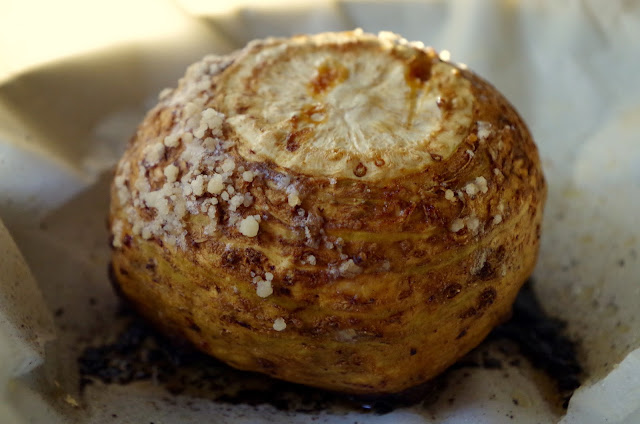Hanky Panky (A Cocktail from Amaro)
Ah, bitterness. The anger that forgot where it came from, or so says Alain de Botton. However, you will embrace this bitterness, know only marginally where it comes from, and dismiss anger. For you, my friends, are about to embark on a journey into the bitter and bittersweet world of amari with me.
Amari (the plural of amaro, the Italian word for bitter) are all the rage right now. And there are rules that go along with amari, most notably to be called such, these lovely little liqueurs must originate in Italy (or so some sticklers say). You can be all snobby about them if you would like (and there are plenty who are decidedly snobby about their amari), but I prefer a more adventurist view.
Brad Thomas Parsons, who wrote my most recent libation guidebook Amaro and may just be the US's leading expert on amari, is of the same inclusive mindset. He invites Gammel Dansk from Denmark and Unicum from Hungary and Salers from France--all decidedly not Italian--to join the conversation of bitter after-dinner bitter drinks that aid in digestion. Or before dinner drinks to whet the appetite. Or with dinner drinks to complement a meal. Or just anytime drinks.
But here's the rub: the ingredients in amari are closely held, often family-retained secrets. So while we can wax on about the caramel note or the herbaceousness of any particular amari, we're totally guessing about amounts and combinations. We can approximate and give out theories, and Parsons does just that in Amaro. The first half of the book walks you through a multitude of amari and discusses history, known ingredients, and tasting notes. And the second half meanders through a labyrinth of cocktail recipes.
Thank goodness that this book arrived, for I did declare that in 2015 I wanted to have more drink recipes on this here blog. I have certainly fulfilled that resolution.
So I chose the Hanky Panky, mostly because (and I am going to admit something here) I had never had Fernet-Branca. Oh, sure, just about every hipster in the greater Bay Area has slugged down a shot of this with their bartender (apparently this is a thing) or, if your Argentinian, sipped a Fernandito (cola con Fernet), but as is usual, I am the barfly late to the ball. Wait for this: some 25% of the Fernet imported to the US is consumed in San Francisco, and about 70% of all Fernet is imported to Argentina. Quite simply, I believe as a Bay Area resided, I was contractually obligated to figure out what all these people were so fixed upon.
And, friends, I have to tell you I liked it. Yes, Fernet-Branca is a concoction of some 27 international herbs and barks and fungi and spices and roots, including myrrh, cardamom, saffron (so much saffron that the Fernet company influences the price of saffron), galangal, laurel, chamomile, rhubarb root, and aloe ferox (don't worry, I had to look that up, too).
Yes, it is a bracing, exceptionally bitter, incredibly pine-y, and even menthol-y potable. A writer from the Irish Times says he's heard Fernet-Branca described as “like waking up in a foreign country and finding a crowd of people arguing in agitated thorny voices outside your hotel window." But I always have enjoyed the voyeuristic effect of watching a good argument and have guiltily clamored for more even if I didn't understand what was going on. Plus, F. Scott Fitzgerald mentions it as one of France's "humbler poisons" (yes, it's only a passing glance from Dick Diver on his way to alcoholism and he gets the country wrong, but let's work with it here) in Tender is the Night.
And I was not disappointed. The Hanky Panky, a variation on the sweet martini or even a negroni, was a drink pulled together by mixologist Ada Coleman at the American Bar in the Savoy Hotel in London in the early 20th century. Coleman said of this this tipple in a 1925 newspaper article:
“The late Charles Hawtrey … was one of the best judges of cocktails that I knew. Some years ago, when he was overworking, he used to come into the bar and say, ‘Coley, I am tired. Give me something with a bit of punch in it.’ It was for him that I spent hours experimenting until I had invented a new cocktail. The next time he came in, I told him I had a new drink for him. He sipped it, and, draining the glass, he said, ‘By Jove! That is the real hanky-panky!’ And Hanky-Panky it has been called ever since.”
So here we are, sipping on a bitter drink with a bit of a punch. Let's not worry about where this bitterness came from. Because we have a lot more amari to try, and Parsons is happy to tug us by the arm and guide us into this complicated, often confusing, and ever-so-bitter world. Let's go!
If you want even more information (and I had a lot of fun learning about amaro, Fernet-Branca and the Hanky Panky), see here:
- Great article from Food and Wine about amaro.
- Informative little article from a Boston-area website on the Hanky Panky.
- More info on Fernet-Branca from drinkspirts and here with the Atlantic.
I received this book from Blogging for Books in exchange for an honest review.
-------------
Hanky Panky
Adapted from Amaro
Yield:
1 drink
Ingredients:
1 1/2 ounces gin (I used the juniper-forward Tanqueray)
1 1/2 ounces sweet vermouth (I used Dolin Rouge)
2 dashes Frenet-Branca
Garnish: orange zest
1 1/2 ounces sweet vermouth (I used Dolin Rouge)
2 dashes Frenet-Branca
Garnish: orange zest
Instructions:
In a cocktail shaker filled with ice, combine the gin, vermouth, and Fernet-Branca. Stir until chilled and strain into a cold coupe or a cocktail glass. Garnish with the orange zest.












Comments
Post a Comment